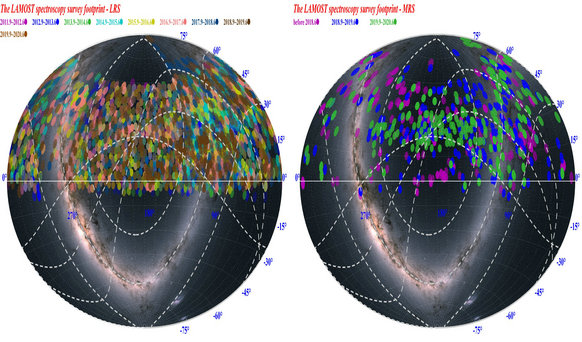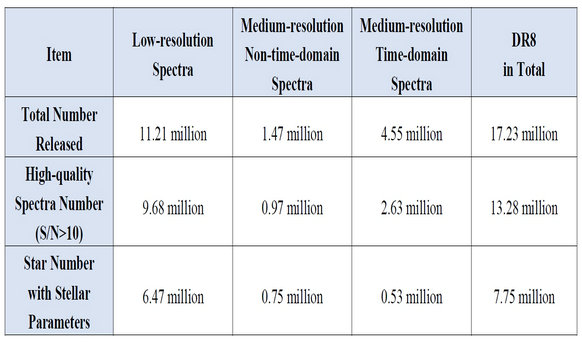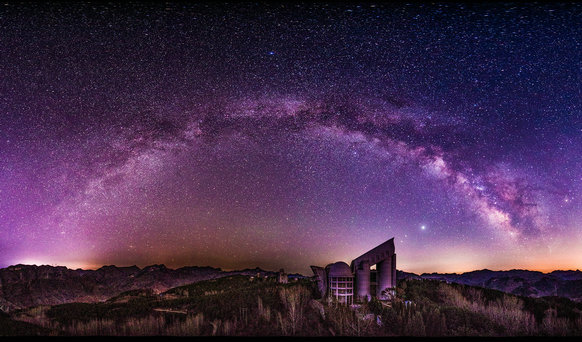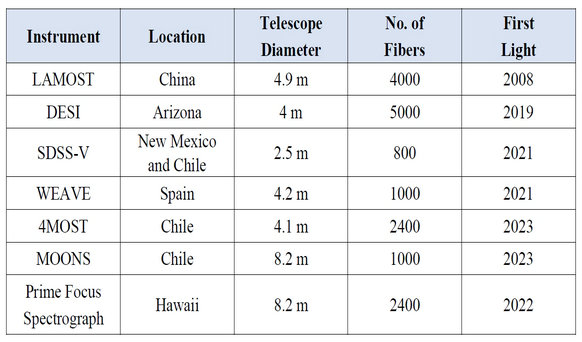LAMOST Released its DR8 Data
On March 31, 2021, the LAMOST DR8 dataset, including the spectra obtained from the pilot survey through the eighth-year regular survey, was officially released to domestic astronomers and international partners.
The DR8 dataset includes the spectra obtained from both the low- and medium-resolution survey. A total of 17.23 million spectra are released, which consist of 11.21 million low-resolution spectra from the observation of 5,207 plates, and 1.47 million non-time-domain and 4.55 million time-domain medium-resolution spectra from 1,089 plates. High-quality spectra, with the signal to noise ratio (S/N) over 10, reach the number of 13.28 million.
Moreover, the stellar spectral parameters of 7.75 million stars are released in DR8, which also include the abundances of 12 elements for part of the stars, e.g., carbon, magnesium, calcium, and so on. It has been currently the largest stellar spectral parameter catalogue in the world. Scientific users can log on the website at http://www.lamost.org/dr8/ to query and download the DR8 data.

Figure 1: Left: Footprint of the LAMOST pilot survey and the eight-year regular low-resolution survey. Right: Footprint of the LAMOST medium-resolution commissioning and the first two-year regular medium-resolution survey. (Credit: LAMOST)

Table 1: Information of DR8 dataset in detail.
It is estimated that by 2022, the number of spectra released by LAMOST will exceed 20 million. Such a huge spectroscopic dataset is the result of the design concept of LAMOST, which is the large-scale spectroscopic sky survey.
Before LAMOST was built, the number of objects observed by humans had already reached tens of billions, but only one in ten thousand of them had undergone spectroscopic observation. At that time, only a few hundred spectra could be obtained in a single exposure of the largest spectroscopic survey telescope.
To realize the large-scale spectroscopic sky survey, the designers of LAMOST increased the number of fibers to 4000, which increased the maximum number of fibers equipped on a telescope by an order of magnitude. In 2008, LAMOST carried out its first light observation, opening a new era of large-scale spectroscopic sky survey.

Figure 2: LAMOST and the Milky Way.(Credit: Yingwei Chen)
Moreover, the fast robotic fiber arrangement technology, which was first applied to so large-scale multi-fiber equipment successfully by LAMOST, also plays an important role in the high spectral acquisition rate. To reconfigure for a new sky map only takes 10 minutes, greatly improving the observation efficiency.
Nowadays, more than ten years after the success on LAMOST, which is taken as a model to imitate, the robotic fiber arrangement technology is in full swing and is being implemented on a number of influential telescopes in the world. The 2.5-meter SDSS survey telescopes in New Mexico and Chile, the 4.2-meter William Herschel telescope in the Canary Islands, and the European Southern Observatory (ESO) 4-meter multi-object spectroscopic telescope of in Chile will join the robot revolution. Even some of the world’s largest telescopes, such as the Subaru in Japan and the ESO Very Large Telescope which are in the 8-meter class, are adding robotic spectrographs. (Clery, 2021, Science, 371, 550)

Table 2: Robot revolution. To speed up the ability to split light from thousands of stars at once, sky surveys are turning to robot-controlled optical fibers. (Clery, 2021, Science, 371, 550)
“Having operated for 10 years, the huge amount of released data and the increasing study results have manifested the success of LAMOST, for both of its design concept and its technology,” said Prof. ZHAO Yongheng, the Executive Deputy Director of the Center for Operation and Development of LAMOST.
The spectral data and related products of LAMOST provide valuable insights for studying the structure, origin and evolution of the Milky Way. With the continuous efforts of the LAMOST team and the mining and use of LAMOST data by astronomers all over the world, LAMOST will continue to show more excitement.